The Gold Rush
1848 - United States
A sawmill on the river Sacrament, a worker named James W. Marshall. While it is being at work intent, he sees to sparkle something on the shore of the river, he picks up it and well soon it discovers to have found a gold nugget. The news scatters and the people start to sieve the sandy fund of the river in the hope to find other gold dust. December 5 th 1848 the president of the United States communicates to the Senate that the open auriferous ores seem richer than he initially held.
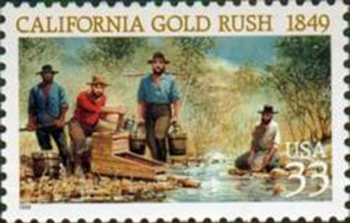
It is the beginning of the famous Gold Rush, the American great run of the gold, whose memory has inspired so many novels and film [USA - 1999].
It is incredible the fact to that the inhabitants of a vast territory as the California passed in alone 18 months from 150 over 100.000. Attracted by the fever of the gold the people it stirred from every region of the United States and even in Europe. Cities were Born there where auriferous seams were discovered and they died when they exhausted him.
The gold diggers were: Armed up to the teeth and they constituted the dregs of the world.
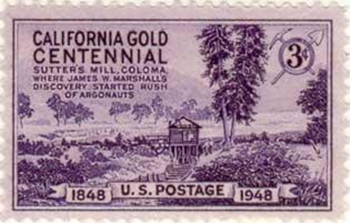
But among the seekers there were also people coming from more elevated social layers. Many didn't have geologic knowldges, but, some, knew how to organize and to direct the run to the gold. Only the most valid entrepreneurs could send the enterprise to good end and slowly the adventurers left the footstep to the researchers, to the miners, to the engineers, to the railroads, to the industries, to the urban installations, to the schools. The wild West became the modern American West.
1851 - Australia - New Zealand
The Australian gold rush began in 1851 when Edwarel Hargraves and his companions the Tom brothers and John Lister, found specks of gold near Bathurst in New South Wales.
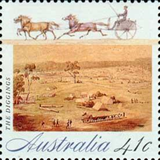
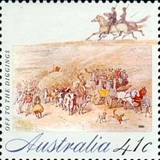
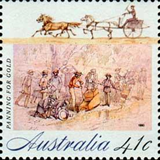
By December 1851 gold had been found in various places in Victoria including Clunes, Castlemaine, Bendigo and Ballarat. Many men left their jobs and headed for the diggings followed by a tide of people from elsewhere in the world in 1852.
Most people walked to the goldfields and once there lived in tents or shanty huts made from canvas, wood and bark.
In September 1851 the first gold licences were issued. Although women were at the goldfields from the beginning and in various occupations, it was initially a very male society.
A gold rush, albeit less consistent, there was also in New Zealand.
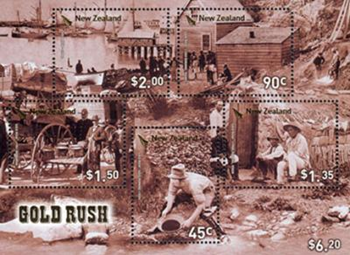
In early 1850 the New Zealand authorities were concerned about the increasing flow of settlers leaving for the Australian gold fields, and offered a good reward (£ 500) for the discovery of gold. Intensified searches and gold was found in different territories. Thus began a new race which will last until the early twentieth century.
1998 - Canada
Geoge Carmack, sifting through the sands of the river Rabbit Creek, a tributary of the Klondike, he found gold nuggets. As soon as word got another gold fever broke out. [USA-1998]. But this time the fever had to deal with the cold and discomfort of a country such as Alaska.
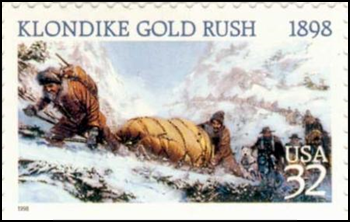
Despite the difficulties, were soon 80,000 gold seekers who moved in that remote region. Among them was Jack London. After a year he departed, poor as it was when you arrived, tired, disappointed, with the mangled body from scurvy, fatigue, suffered from the bitter cold during the winter. But at least he returned with a rich interior that writing novels was able to take advantage of the border which made him famous.
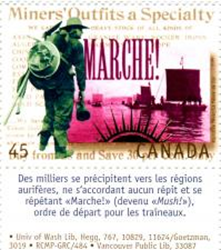
Even in distant Alaska Corporations rationally exploited gold veins, now the Gold Rush was controlled by the government.
Postage Stamps



